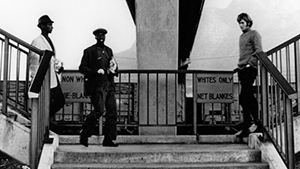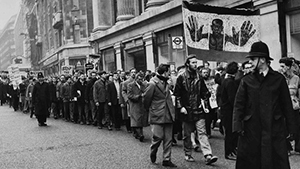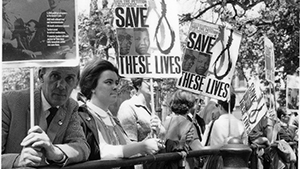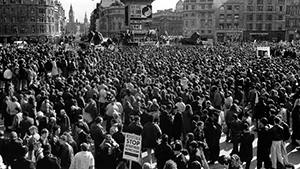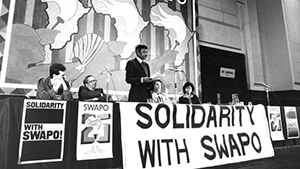History of the Anti Apartheid Movement
WHITE SUPREMACY
Apartheid was a unique system of racial segregation and white supremacy in South Africa. For nearly three centuries Africans were dispossessed and exploited by Dutch and British colonists. In 1948 apartheid (‘apartness’) became official policy. The National Party, elected by an all-white electorate, extended and formalised separation and discrimination into a rigid legal system.
BOYCOTT APPEAL
In 1959 a group of South African exiles and their British supporters appealed for an international boycott of South African products. The appeal was launched at a meeting on 26 June, South Africa Freedom Day, at which Julius Nyerere, later President of Tanzania, was the main speaker. The idea of a boycott came from South Africa, where the Congress movement was boycotting products made by companies that supported the apartheid government.
A DRAMATIC DECADE
The 1960s were a dramatic decade for the Anti-Apartheid Movement. It had high hopes after the success of the boycott month in March 1960, when hundreds of thousands of people refused to buy South African goods. But the AAM’s new campaign for wider economic sanctions against South Africa was blocked by governments convinced that trade and investment in South Africa were vital to the British economy.
ALL CHANGE IN SOUTHERN AFRICA
The 1970s were a pivotal decade in the struggle for freedom in Southern Africa. In 1975 Mozambique and Angola won their independence from Portugal. In Zimbabwe the guerrilla war escalated, forcing the white minority to concede majority rule. In South Africa the Soweto student uprising in 1976 and the growth of independent trade unions signalled a new wave of resistance.
A BROAD COALITION
In the 1980s the Anti-Apartheid Movement grew from a small but determined pressure group into Britain’s biggest ever mass movement on an international issue. It mobilised hundreds of thousands of people all over Britain in demonstrations for sanctions against South Africa and the release of Nelson Mandela. It created a broad coalition of students, trade unionists, churches, political parties and community organisations to work for an end to all forms of British collaboration with apartheid.
NELSON MANDELA RELEASED
In February 1990 President de Klerk lifted the bans on the African National Congress, Pan-Africanist Congress and the South African Communist Party, and announced the release of Nelson Mandela. The way was open for negotiations for a new democratic constitution for South Africa.
In 1975 Angola and Mozambique won independence from Portugal. Zimbabwe achieved majority rule in 1980. Together with Botswana, Zambia and Tanzania these countries became known as the frontline states. South Africa was ringed by black majority governments on its northern border. The prospects for liberation seemed transformed.
LEAGUE OF NATIONS MANDATE
South Africa ruled Namibia under a League of Nations mandate given it after the First World War. It imposed apartheid and treated Namibia as a fifth province. In 1966 the UN General Assembly revoked the mandate, calling on South Africa to withdraw, and the South West Africa People’s Organisation (SWAPO) launched an armed struggle to win Namibian independence.
UDI
After the white minority in Southern Rhodesia made a unilateral declaration of independence (UDI) from Britain in November 1965, the Anti-Apartheid Movement called for no independence before majority rule (NIBMAR). It campaigned against Labour and Conservative government proposals for compromise with the white regime.

